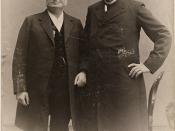The questions relating to personal identity keep on multiplying in number as and when some partial answers are supplied to the preceding questions. Be it Locke's conception of personal identity or that of Descartes, the sceptic attribute cannot be gotten rid off despite establishing a philosophical basis to attribute the term personal identity. It is in the mist of such scepticism that Hume provides a solution to the problem with the bundle theory of the self as its base. My intention in this essay is not only to test the validity of such a claim but to point out why such a claim was made in the first place and the problems which arise by making the bundle self as a starting point to recover belief in personal identity. I have tried to symbolise the perception and the perceived, in the form of superhuman powers of the existential content or perceptions of more weight age of the experience of those separated by the dual guise of Peter parker and Spiderman.
The criticisms and the significance of content of the movie together will show that the bundles of experiences do belong to the experiencer. Moreover this self realisation can be achieved despite being in the mist of the temporal characters which are prevalent in this world. This is where the collaboration of self and action propounded in the Karma Yoga comes into picture. I will proceed to simplify Hume?s bundle self into the no self doctrine of Early Buddhism where too Humean conception of relations of contiguity, memory and causation play a significant role.
The very first sentence of section VI in book 1 of A Treatise of Human Nature makes one revisit Descartes? Cogito ergo sum, ?I think, therefore I am? (Discourse on the Method) in which the validity of...


